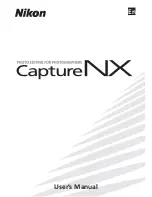
About Using Shared Schemas for Enterprise User Security
Getting Started with Enterprise User Security
11-19
About Using Shared Schemas for Enterprise User Security
The following sections describe shared schemas, and how to set them up:
■
Overview of Shared Schemas Used in Enterprise User Security
■
How Shared Schemas Are Configured for Enterprise Users
■
How Enterprise Users Are Mapped to Schemas
Overview of Shared Schemas Used in Enterprise User Security
Users do not necessarily require individual accounts or schemas set up in each
database. Alternatively, they can connect to a
shared schema
and be granted access
to objects that are associated with target applications. For example, suppose that
users Tom, Dick, and Harriet require access to the Payroll application on the
Finance database. They do not need to create unique objects in the database, and
therefore do not need their own schemas, but they do need access to the objects in
the Payroll schema.
Oracle Database supports mapping multiple users stored in an enterprise directory
to a shared schema on an individual database. This separation of users from
schemas reduces administration costs by reducing the number of user accounts on
databases. It means that you do not need to create an account for each user (user
schema) in addition to creating the user in the directory. Instead, you can create a
user in the enterprise directory, and map that user to a shared schema which other
enterprise users can also be mapped to. For example, if Tom, Dick and Harriet all
access both the Sales and the Finance databases, you do not need to create an
account for each user on each of these databases. Instead, you can create a single
shared schema on each database, such as
GUEST
, that all three users can access.
Then individual access to objects in the Sales or Finance database can be granted to
these three users by using enterprise roles. A typical environment can have up to
5,000 enterprise users mapped to one shared schema and each user can be assigned
a set of enterprise roles.
Oracle recommends that you create a separate shared schema that contains no
objects to use as an entry point. Then grant access to application objects in other
schemas through enterprise roles. Otherwise, application objects can be
inadvertently or maliciously deleted or altered.
In summary, shared schemas provide the following benefits:
■
Shared schemas eliminate the need to have a dedicated database schema on
each database for each enterprise user.
Содержание Database Advanced Security 10g Release 1
Страница 17: ...xvii ...
Страница 20: ...xx ...
Страница 24: ...xxiv ...
Страница 42: ...xlii ...
Страница 44: ......
Страница 62: ...Oracle Advanced Security Restrictions 1 18 Oracle Database Advanced Security Administrator s Guide ...
Страница 100: ...Duties of an Enterprise User Security Administrator DBA 2 38 Oracle Database Advanced Security Administrator s Guide ...
Страница 102: ......
Страница 116: ...How To Configure Data Encryption and Integrity 3 14 Oracle Database Advanced Security Administrator s Guide ...
Страница 124: ......
Страница 148: ...RSA ACE Server Configuration Checklist 5 24 Oracle Database Advanced Security Administrator s Guide ...
Страница 246: ...Managing Certificates 8 28 Oracle Database Advanced Security Administrator s Guide ...
Страница 254: ...Configuring Oracle Database for External Authentication 9 8 Oracle Database Advanced Security Administrator s Guide ...
Страница 284: ......
Страница 350: ...Troubleshooting Enterprise User Security 12 38 Oracle Database Advanced Security Administrator s Guide ...
Страница 384: ......
Страница 394: ...Data Encryption and Integrity Parameters A 10 Oracle Database Advanced Security Administrator s Guide ...
Страница 414: ...Physical Security D 6 Oracle Database Advanced Security Administrator s Guide ...
Страница 518: ...Index 10 ...
















































